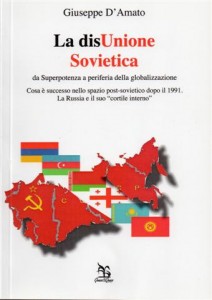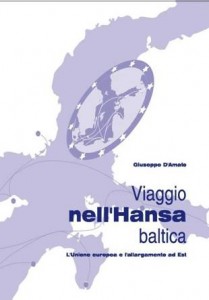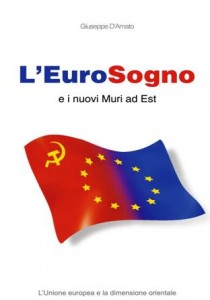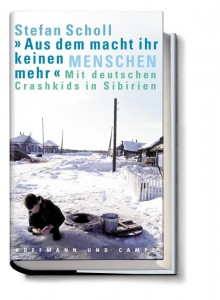Energy&Economy
The modernization process in Ukraine will take place within three areas, stated the Vice Prime Minister of Ukraine, Borys Kolesnikov. The first direction presupposes business infrastructure development in Eastern Ukraine including modernization of airports and construction of high capacity runways as well as construction of exhibition centres and conference centres up to the world standard.
The second direction will comprise the development of agriculture in Central Ukraine. The government is determined to increase the volumes of corn growing virtually twofold, up to 100 million tons per year, by means of offering economic incentives in the agricultural sector.
Finally, the third direction will cover the tourist infrastructure development in Western Ukraine and Crimea.
Targeted modernization projects will also contribute to radical changes in the vital for the country areas, said Vladyslav Kaskiv, the Head of the Working Group for National Projects of the Committee on Economic Reforms. Their range is rather broad: from the creation of a transmission system for liquefied gas up to providing the new generation of Ukrainian schoolchildren with Internet access. Contrary to the Russian approach, the Ukrainian projects will be implemented not at the expense of the state funds but according to business models at the expense of the private investors.
YES, Yalta, October 2nd, 2010.
Россия безнадежно отстает от Китая.
5 Oct 2010«Китай вышел на первое место в мире по темпам экономического роста. Россия могла бы повторить ее успех, если бы развивала научно-технический потенциал страны. Однако власти выбрали более простой путь – опору на экспорт сырья.
Особую гордость у китайских специалистов вызывает тот факт, что высокие темпы роста ВВП удалось поддержать, несмотря даже на негативное влияние мирового финансового кризиса и на серьезные стихийные бедствия. Большинство независимых экспертов отмечают, что, с одной стороны, наращивание Китаем экономической мощи положительно для России.
Однако, с другой стороны, рост китайского спроса на российское сырье еще больше усугубит национальную болезнь России – зависимость от экспорта природных ресурсов».
Статья – Анастасия Башкатова – Независимая газета
Еще летом официальные представители «Газпрома» говорили о том, что в 2011 году стоимость газа для Беларуси составит 250 долларов США за тыс куб. м., что на 67 процентов больше цены, по которой «Белтрансгаз» оплачивает газ в 2010 году. Однако 22 сентября посол РФ в Беларуси А. Суриков заявил журналистам, что цена на природный газ для нашей страны в 2011 году может увеличиться лишь на 10% в сравнении с текущим годом. Перейдет ли в следующем году Беларусь на европейские цены за газ? Удастся ли сторонам избежать нового газового конфликта?
Статья – BLR
Ashgabat continues its policy of diversifying export routes for its raw materials. “This station will make it possible to increase supplies of gas to the Turkmenistan-China pipeline”, Turkmenistan President Gurbanguly Berdymukhammedov said, speaking at the Bagtyayrlyk launch ceremony. “It can pump 60 million cubic meters of gas a day”, he added. China is set to become the largest buyer of gas from Turkmenistan over the coming years as a pipeline linking the two countries, through Uzbekistan and Kazakhstan, reaches full capacity. Deliveries began earlier this year and are expected to hit 40 billion cubic meters in 2015. The opening came as China and Russia signed a raft of energy deals, including on increasing natural gas exports to Beijing. Gazprom, Russia’s state-controlled gas producer, said it expects to be able to supply China with 30 billion cubic meters of gas annually starting in late 2015.
“In addition to supplying Russia, China and Iran, we are also taking concrete measures to accelerate progress in the construction of the Turkmenistan-Afghanistan-Pakistan and India pipeline in concert with the member countries of this large-scale project,” Berdymukhammedov said. At the end of August Turkmenistan and Afghanistan signed an agreement on construction of the Trans-Afghanistan (TAPI) gas pipeline for the transfer of Turkmen gas to Pakistan and India which have expressed interest in buying up to 70 billion cubic metres annually, by the end of this year. The TAPI project, first put forward in 1995, was promoted by the country’s late leader, Saparmurat Niyazov, in the early 2000s. It secured strong support from Washington after a U.S.-led offensive ended the Taliban’s five-year rule over Afghanistan in 2001. Turkmenistan has previously estimated the cost of the project at $3.3 billion. Natural gas to fill the pipeline could be drawn from the massive South Yolotan deposit, currently under development, and the existing Dovletabad field.The planned pipeline would have initial capacity for 33 billion cubic metres a year and would run for nearly 2,000 km (1,250 miles), including 735 km across Afghanistan and another 800 km through Pakistan. Despite receiving financing from the Asian Development Bank (ADB) the project, whose route would take it through conflict torn-Helmand and Kandahar in Afghanistan and Quetta in Pakistan, has been held up by security problems.
Earlier, on May 21st, Berdymuhammedov unexpectedly signed a decree stating that companies from Turkmenistan will build an internal East-West gas pipeline allowing the transfer of gas from the biggest deposits in Turkmenistan (Dowlatabad and Yolotan) to the Caspian coast. The East-West pipeline is planned to be around 1000 km long and have a carrying capacity of 30 bn m³ annually, at a cost of between one and one and a half billion US dollars. Construction of the pipeline is to be financed by the Turkmengaz company; it will begin this June and last five years.
Some experts say that this decision is probably motivated by Ashgabat desire to maintain its influence on which direction its gas is exported from the Caspian coast; gas can flow from there to Europe (for example, along the projected trans-Caspian route), to Russia (along the planned Caspian route), or to Iran (along the already existing Korpeje-Kurt Kuy route). By not taking a final decision on which way to export its gas from this new pipeline, Ashgabat can extend and heat up the rivalry between Russia and the West for Turkmenistan’s gas.
Giuseppe D’Amato
See also EuropaRussia February 3rd, 2010.
Russia-Norway. Settled an old Arctic dispute.
19 Sep 2010Moscow and Oslo signed an agreement on their maritime border in the energy-rich Barents Sea, ending a dispute that has dragged on for decades. The disputed territory covered 175,000 square km (67,600 sq miles), an area about half the size of Germany, mainly in the Barents Sea between proven petroleum reserves on the Russian and Norwegian sides.
Canada, Russia, Norway, the United States and Denmark — the only nations with Arctic coastlines — are racing to file territorial claims over oil, gas and precious metal reserves that could become more accessible as the Arctic ice cap shrinks. International law states that the five have a 320 km (200 mile) economic zone north of their borders, but Moscow is claiming a larger slice based on its contention that the seabed under the Arctic is a continuation of its continental shelf. “Our sector in the Arctic is estimated to contain up to 100 billions tons of resources,” Natural Resources Minister Yuri Trutnev said.
Russia and Norway have already begun tapping mineral riches buried beneath the Barents Sea. Norwegian oil company Statoil brought its Snoehvit natural gas field on line in 2007. Meanwhile, Russia’s Gazprom, in conjunction with Statoil and France’s Total, is developing the Shtokman gas field.
The deal is expected to boost energy cooperation between the two countries, as it paves the way for the lifting of a 30-year-long moratorium on oil and gas extraction in the disputed zone. “Undoubtedly, this treaty will make a substantial contribution to strengthening the legal regime in the Arctic, based on the 1982 UN Convention on the Law of the Sea, and to supporting the atmosphere of peace and cooperation there,” a source in the Russian presidential administration said.
Norway has urged Canada to negotiate and settle their disputes with Russia to decrease existing tensions over sovereignty in the Far North.
Article – The Guardian (UK) September 15th, 2010.
The European Commission on Monday’s revised its growth forecast for EU economy in 2010. According to the new data, GDP for the 16-nation euro area this year should jump 1.7%, compared to its previous forecast of 0.9%, thanks to increases of 3.4% in Germany and Poland, 1.9% in the Netherlands, 1.7% in Britain, 1.6% in France, and 1.1% in Italy.
Poland – manufacturing sector leads the recovery
Economic activity continued to be strong in the second quarter of 2010, with GDP growth reaching 1.1% q-o-q. The upswing was driven by a strong manufacturing sector (industrial production (s.a.) grew by 10.5% y-o-y in the second quarter of 2010) and a sharp rebound in world trade that brought Polish exports to their pre-crisis levels. Moreover, domestic demand increased on the back of rebuilding inventories and accelerating private consumption, fuelled by improving confidence as the recovery becomes firmer, and the overall resilience of the labour market. However, private investment continued to suffer from uncertainties regarding the global recovery and low capacity utilisation levels. In 2010 real GDP growth is expected to accelerate to 3.4%, ¾ pp. higher than expected in the Commission’s spring forecast. This follows from the better-than-expected result in the first half of 2010.
Quarterly real GDP growth is projected to slow somewhat in the third quarter of 2010 and remain stable in the final quarter of the year. The recovery is likely to be mild in the second half of the year, as the impetus from stock-building is likely to peter out and employment growth will remain sluggish towards the end of 2010. Although part of the labour-market adjustment was achieved through real wages, labour hoarding during the slowdown will imply less employment-rich growth and some re-adjustment of wages in the years to come. Stagnating employment and real wages will weigh on real disposable income and, combined with necessary fiscal consolidation, limit the potential for a strong rebound of domestic consumption.
Investment growth will mainly reflect robust public spending in capital expenditure, while tight financing conditions and excess capacity in certain sectors will hamper growth in private investment. The annual HICP inflation rate reached 2.5% in the second quarter of 2010, a notch higher than in the spring forecast. It is expected to remain below the central bank’s inflation target of 2.5% within the forecast horizon, reflecting the remaining slack in the economy.
Document – EU
The Northeast passage is tens of thousands of kilometres shorter than existing routes, stretching 13,000 kilometres along Russian shores to Asia compared to the 22,000-kilometres passage via the Suez Canal. “The aim of the voyage is to determine the feasibility of delivering energy on a regular, economically viable and safe basis along the Northern Sea Route from the Barents and Kara Seas to the markets of Southeast Asia,” Sovcomflot said in a statement.
Article – AFP
Gazprom. Il nodo del prezzo del gas.
24 Aug 2010Torna d’attualità la questione del prezzo del gas russo. La compagnia tedesca E.On ha chiesto nuovi sconti alla Gazprom. E’ la seconda volta che ciò accade quest’anno dopo la riduzione ottenuta dalle società occidentali in primavera.
Tre le ragioni principali: 1. La differenza di prezzo tra quello della monopolista russa e quello dei suoi concorrenti – su tutti norvegesi, olandesi, del Qatar – non è poca cosa; 2. Si utilizzano sempre più gas liquefatti (LNG); 3. Gli Stati Uniti stanno incrementando la produzione dei gas scisti, di cui anche la Polonia è ricca.
“Siamo sempre in trattativa con tutti i nostri fornitori per ottenere condizioni conformi con la situazione di mercato”, ha chiarito il portavoce di E. On, Kai Krischnak. Già all’inizio d’agosto un funzionario della stessa compagnia tedesca, Johannes Teyssen, aveva segnalato che la E.On avrebbe cominciato da ottobre ad avere delle perdite di profitti se i prezzi non fossero stati abbassati.
Quale sia il tipo di sconto che la compagnia richiede non è stato rivelato. Il maggior concorrente della Gazprom in Europa, la norvegese Statoil, avrebbe accettato di vendere per un 30% in meno, si dice a Mosca. I contratti di lunga durata, imposti della monopolista russa, permettono di richiedere delle modifiche in presenza di cambiamenti significativi della situazione dei mercati. Negli Stati Uniti il pezzo medio del gas nel primo trimestre è stato di 195 dollari, mentre ora veleggia sui 156. Secondo la Troika Dialog nel primo trimestre del 2010 i clienti occidentali della Gazprom hanno pagato in media 307 dollari per mille metri cubi, mentre sul mercato britannico il prezzo medio è stato di 187.
Dopo la E.On anche l’Ucraina, attraverso il suo primo ministro Azarov, ha richiesto pubblicamente la revisione del prezzo, concordato a Kharkiv soltanto pochi mesi prima.
Nel 2009 le esportazioni di gas della Gazprom in Europa sono diminuite di circa il 12% sia per la crisi economica che per lo scontro con Kiev. Secondo alcuni calcoli di specialisti solo nel 2010 la monopolista russa ha perso 2 miliardi di entrate per le riduzioni concesse agli acquirenti. Ma il problema non è ancora risolto.
E’ entrata nella fase finale la costruzione della centrale atomica di Bushehr in Iran. Per una decina di giorni i tecnici russi caricheranno il carburante nucleare, poi entro 6 mesi l’inizio dell’attività. E’ dal 1995 che Mosca aveva accettato di completare un progetto, partito nel lontano 1974 ai tempi dello Scià, da parte della tedesca Siemens.
Quanto sia realmente pericolosa questa centrale è la prima delle domande che l’opinione pubblica si pone. Le posizioni divergono.
Assai interessante è il punto di vista di Mark Fitzpatrick, direttore del Programma di non proliferazione e disarmo all’Instituto internazionale per gli studi strategici. “La Russia – osserva lo studioso – ha accettato di riprendersi il combustibile utilizzato (che contiene plutonio) non appena sia abbastanza freddo. Le critiche a Bushehr distraggono dai veri rischi alla proliferazione creati dal programma di arricchimento dell’uranio da parte dell’Iran”.
Il carburante, presente a Bushehr, sarà molto sotto il 90% di arricchimento necessario per le testate nucleari ed avrà un valore di circa il 3,5%. Teheran ha però un progetto in corso in altri siti per arrivare al 20%, quota che le autorità definiscono necessaria per ricerche in campo medico. Gli ayatollah hanno confermato che il combustibile utilizzato alla centrale in via di ultimazione potrà essere controllato dagli esperti della AIEA in qualsiasi momento.
La seconda questione aperta è di tipo politico. Quale messaggio sta ricevendo oggi l’Iran? Con le sanzioni in corso decise al Consiglio di Sicurezza dell’Onu la Russia ha rotto il fronte internazionale. Le dichiarazioni delle autorità di Teheran sono eloquenti: è stata premiata la nostra fermezza; abbiamo vinto; giornata storica. Mosca pare più interessata alla conquista del mercato mondiale dell’energia atomica civile ed al miliardo di dollari da incassare che a seconde ragioni.
Il Cremlino, tuttavia, non abiura le scelte del dopo Bush e il “reset” nelle relazioni con Washington. I militari russi hanno reso noto che la consegna dei sistemi difensivi SS-300, già acquistati dall’Iran, rimane congelata.
Newsweek magazine compiled a list of the 100 best countries in the world to live in according to 5 categories: health, economic dynamism, education, political environment and quality of life. Top 3 include Finland, Switzerland and Sweden.
Estonia ranks 32nd, Lithuania 34th and Latvia 36th. Ukraine takes the 49th place having outrun Russia 51st and Belarus 56th.
Burkina Faso, Nigeria and Cameroon are recognized to be the world worst countries.
Welcome
We are a group of long experienced European journalists and intellectuals interested in international politics and culture. We would like to exchange our opinion on new Europe and Russia.
Categories
- Breaking News (11)
- CIS (129)
- Climate (2)
- Energy&Economy (115)
- EU Eastern Dimension (85)
- Euro 2012 – Sochi 2014 – World Cup 2018, Sport (43)
- Euro-Integration (135)
- History Culture (198)
- International Policy (261)
- Military (74)
- Interviews (18)
- Italy – Italia – Suisse (47)
- Odd Enough (10)
- Poland and Baltic States (126)
- Religion (31)
- Russia (421)
- Survey (4)
- Turning points (4)
- Ukraine (176)
- Российские страницы (113)
Archives
- November 2020
- October 2020
- September 2020
- August 2020
- July 2020
- May 2020
- April 2020
- March 2020
- January 2020
- December 2019
- November 2019
- October 2019
- September 2019
- August 2019
- July 2019
- June 2019
- May 2019
- April 2019
- March 2019
- February 2019
- December 2018
- November 2018
- October 2018
- September 2018
- August 2018
- July 2018
- June 2018
- May 2018
- April 2018
- March 2018
- February 2018
- January 2018
- December 2017
- November 2017
- October 2017
- September 2017
- August 2017
- July 2017
- May 2017
- March 2017
- January 2017
- December 2016
- November 2016
- October 2016
- September 2016
- July 2016
- June 2016
- May 2016
- April 2016
- February 2016
- January 2016
- November 2015
- October 2015
- September 2015
- June 2015
- April 2015
- March 2015
- February 2015
- January 2015
- December 2014
- November 2014
- October 2014
- September 2014
- August 2014
- July 2014
- June 2014
- May 2014
- April 2014
- March 2014
- February 2014
- January 2014
- December 2013
- November 2013
- October 2013
- September 2013
- August 2013
- July 2013
- June 2013
- May 2013
- April 2013
- March 2013
- February 2013
- January 2013
- December 2012
- November 2012
- October 2012
- September 2012
- August 2012
- July 2012
- June 2012
- May 2012
- April 2012
- March 2012
- February 2012
- January 2012
- December 2011
- November 2011
- October 2011
- September 2011
- August 2011
- July 2011
- June 2011
- May 2011
- April 2011
- March 2011
- February 2011
- January 2011
- December 2010
- November 2010
- October 2010
- September 2010
- August 2010
- July 2010
- June 2010
- May 2010
- April 2010
- March 2010
- February 2010
- January 2010
- December 2009
- November 2009
- October 2009
- September 2009
- August 2009
Our books




